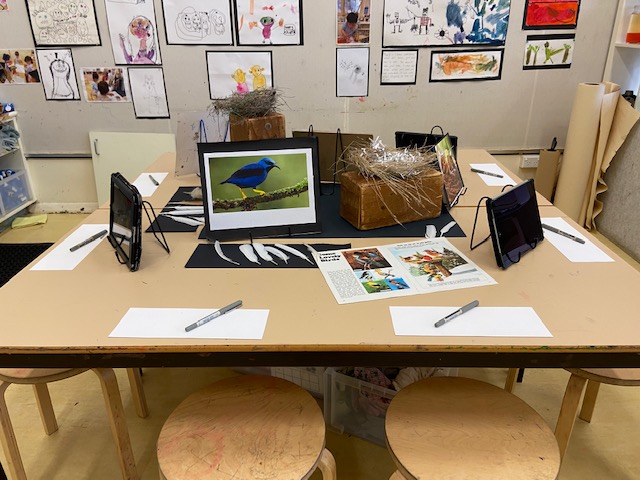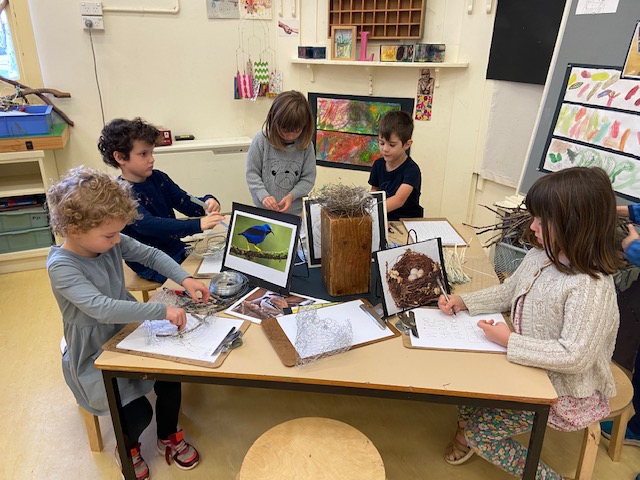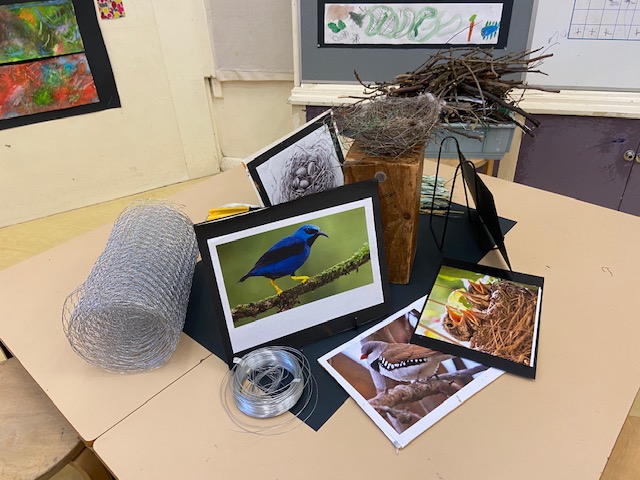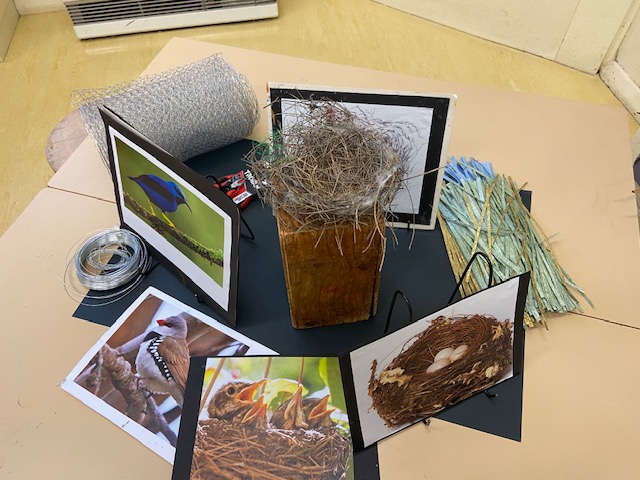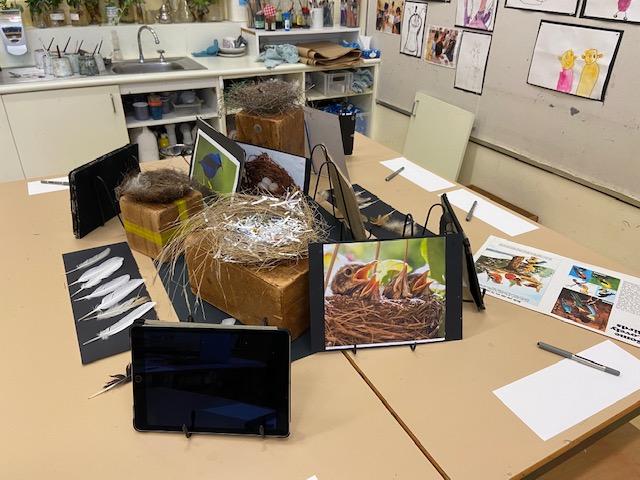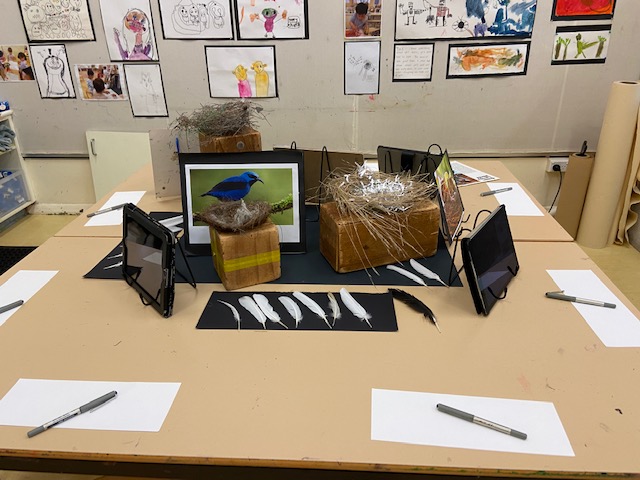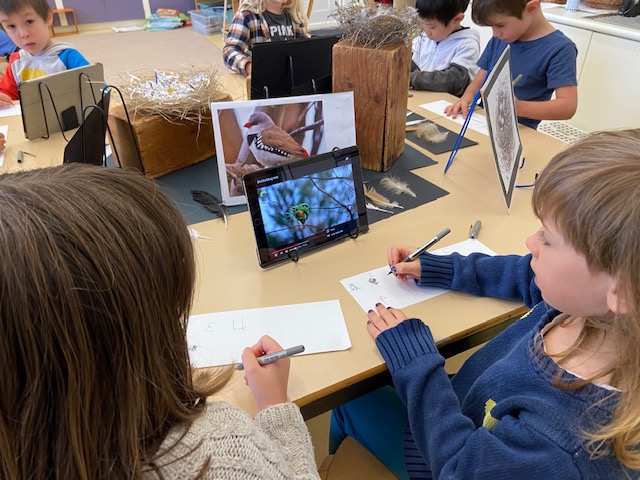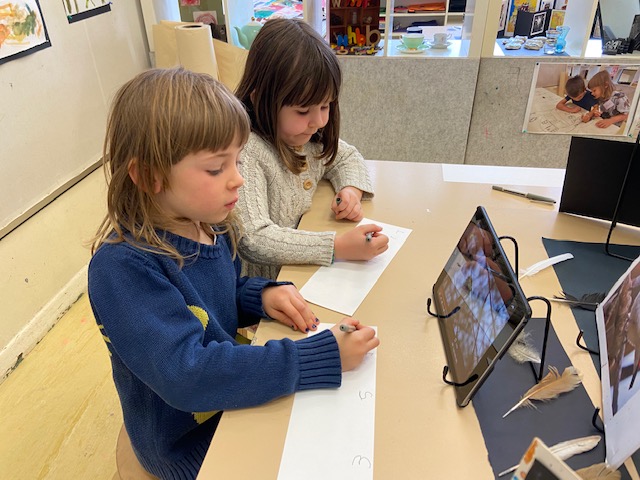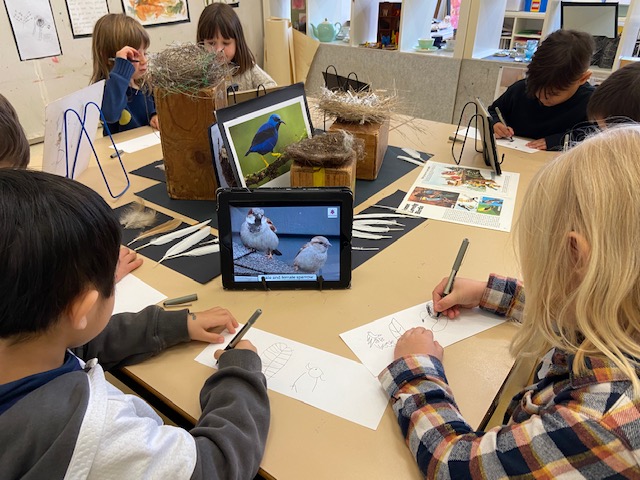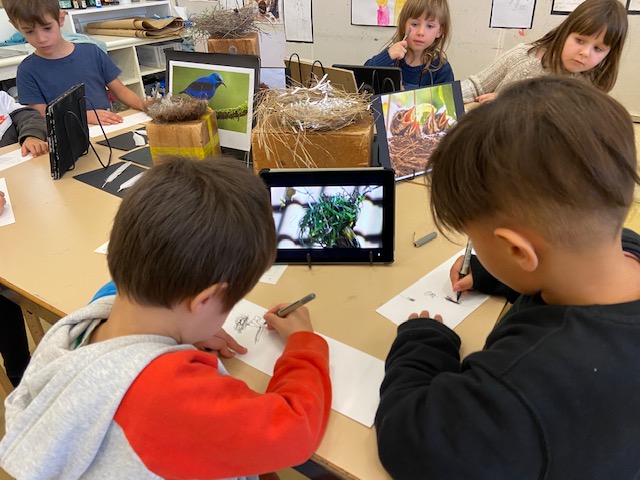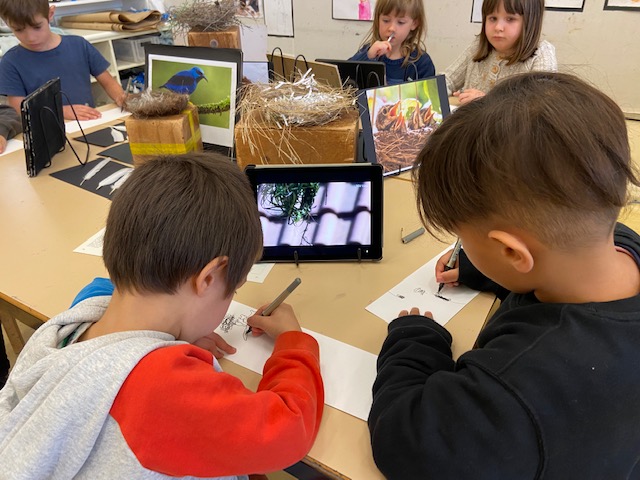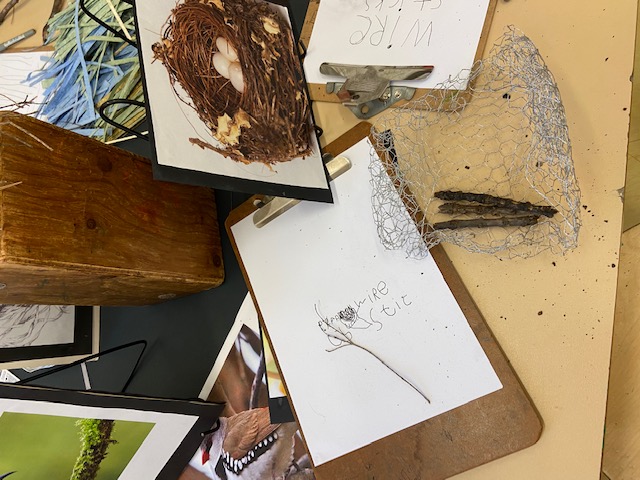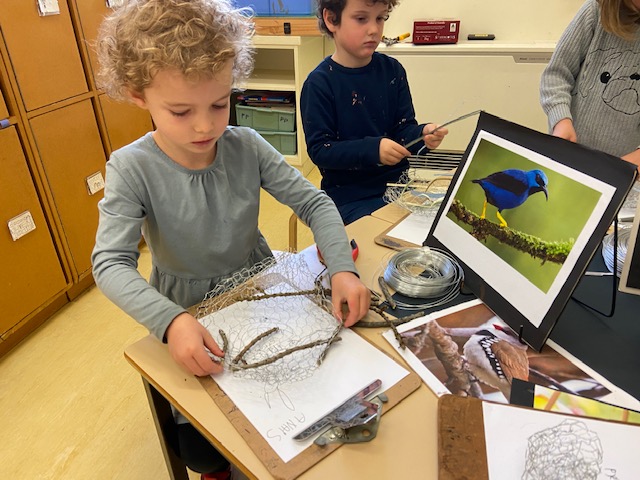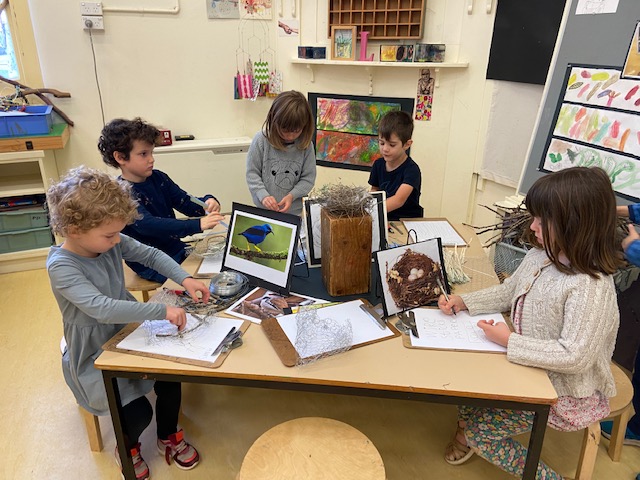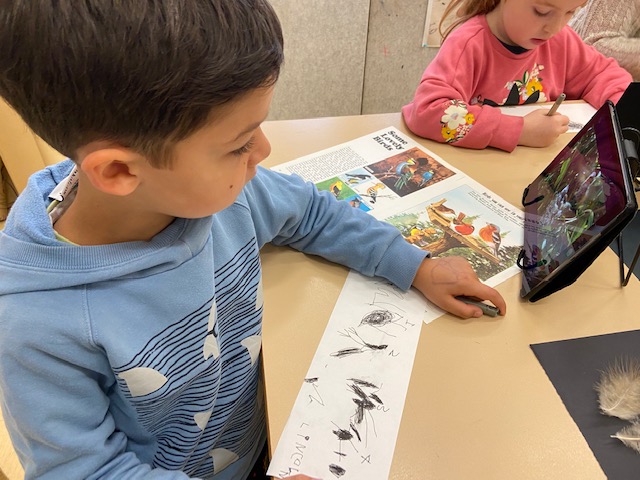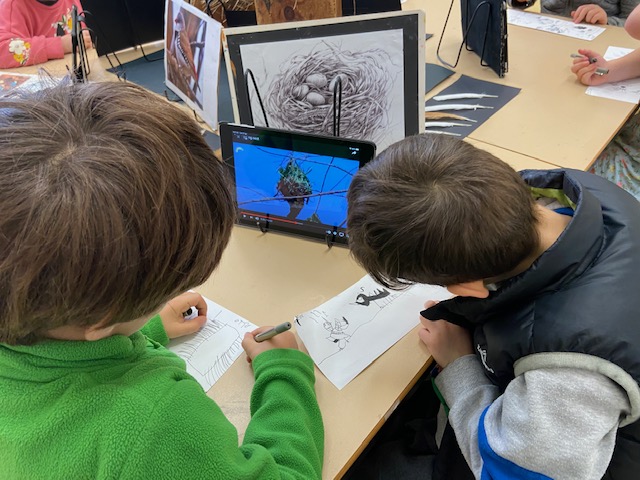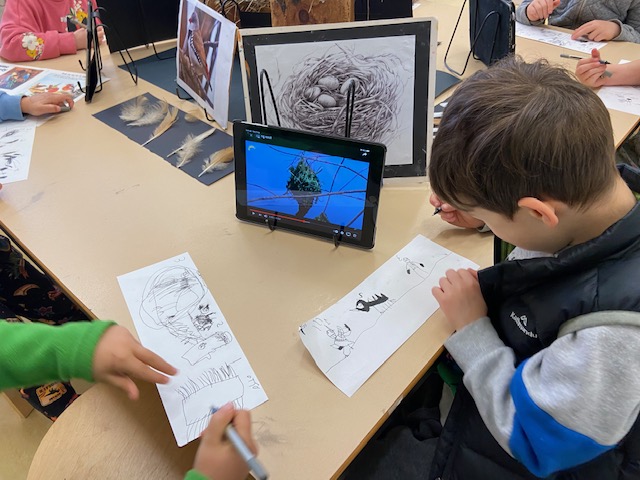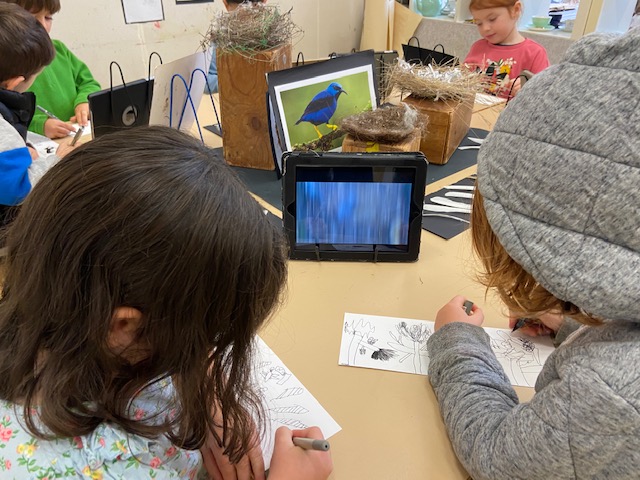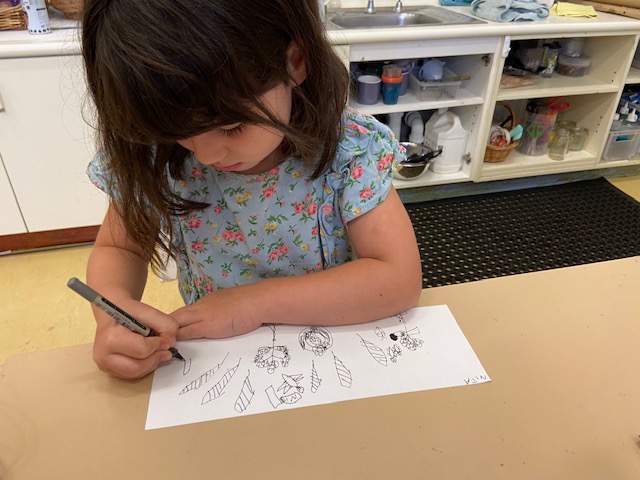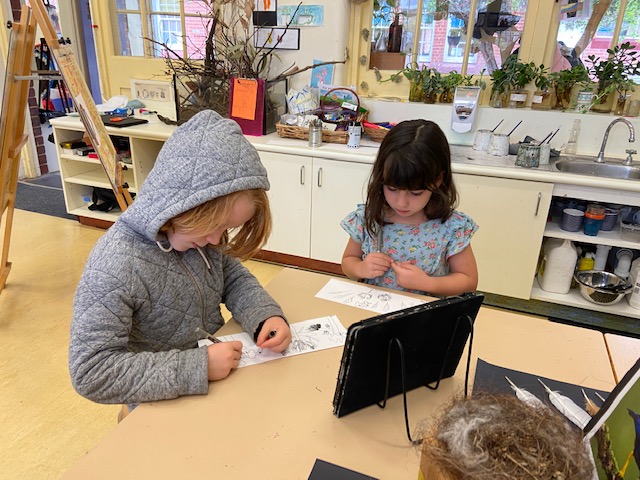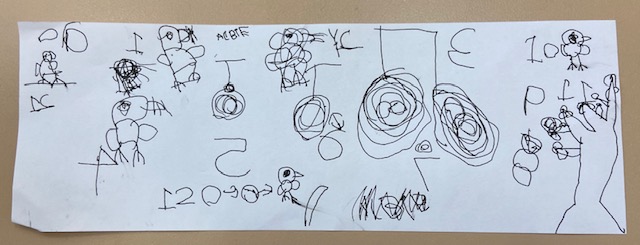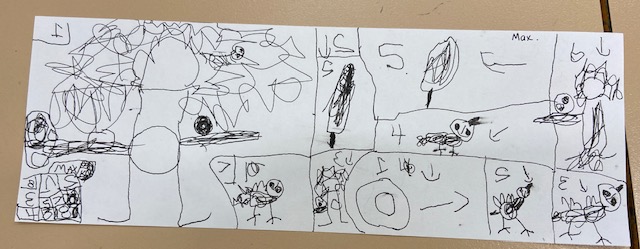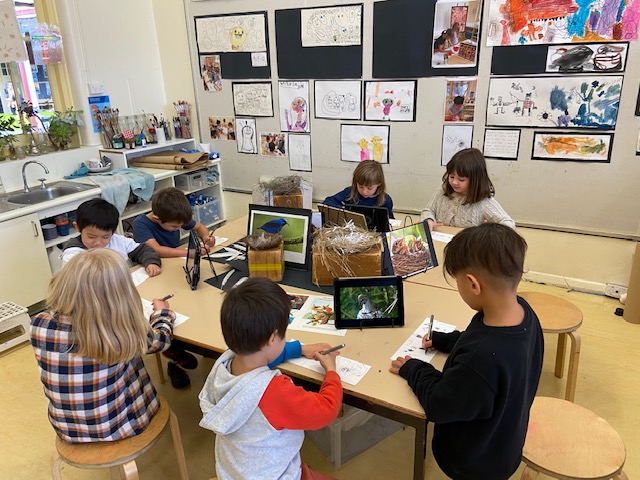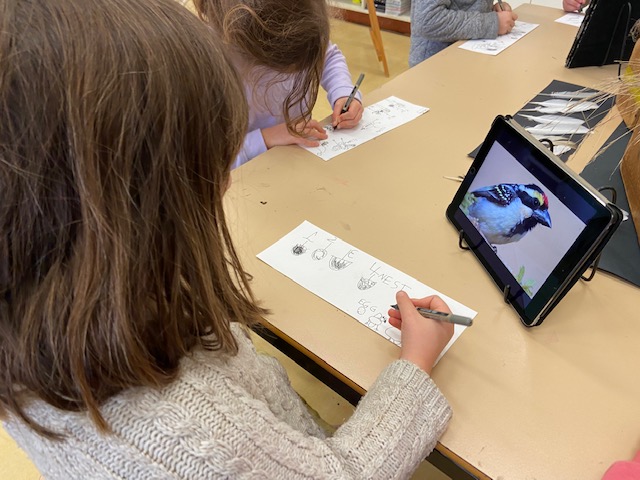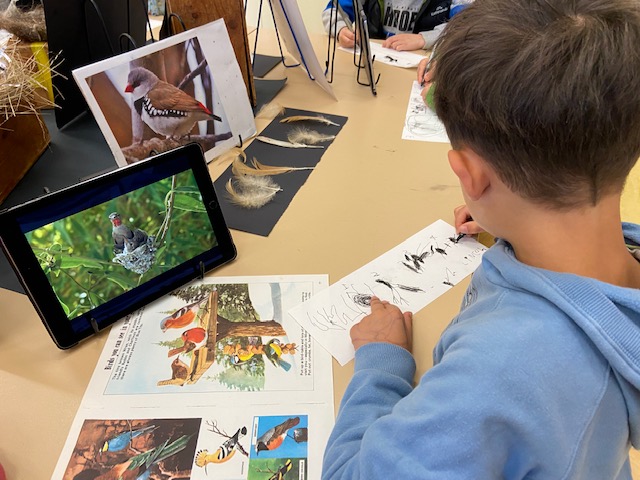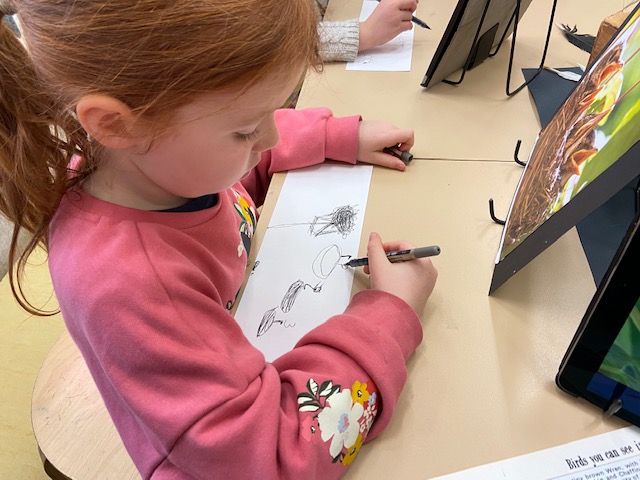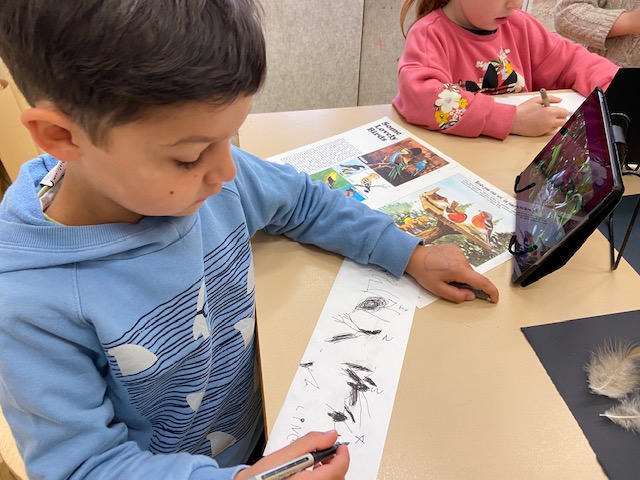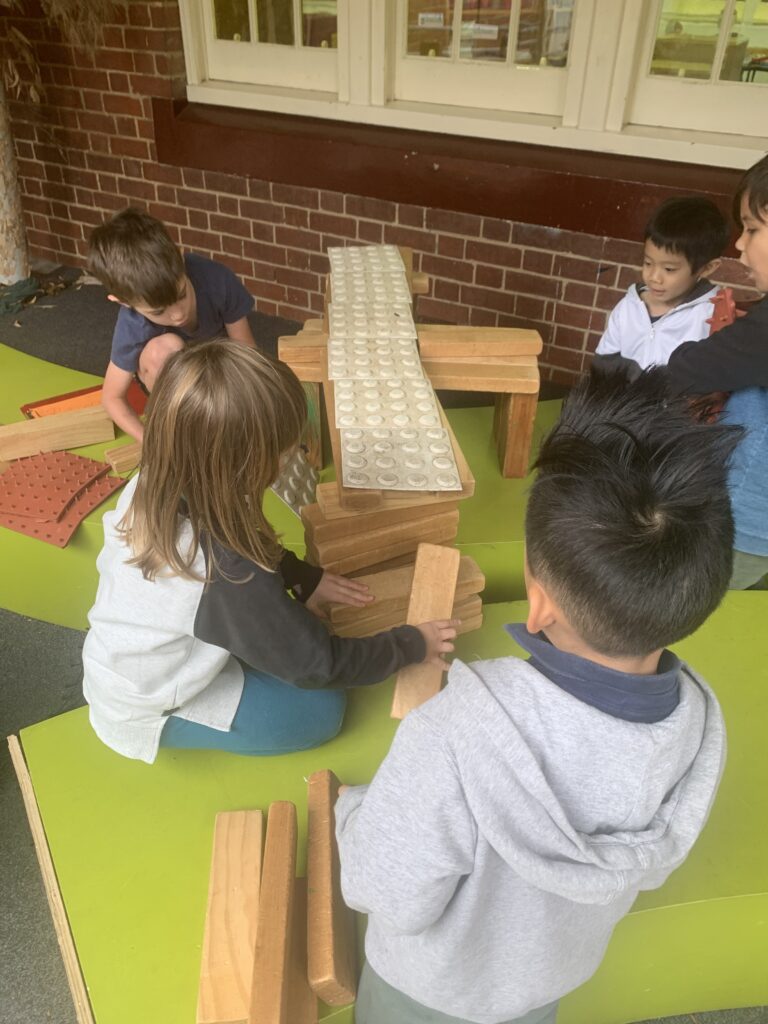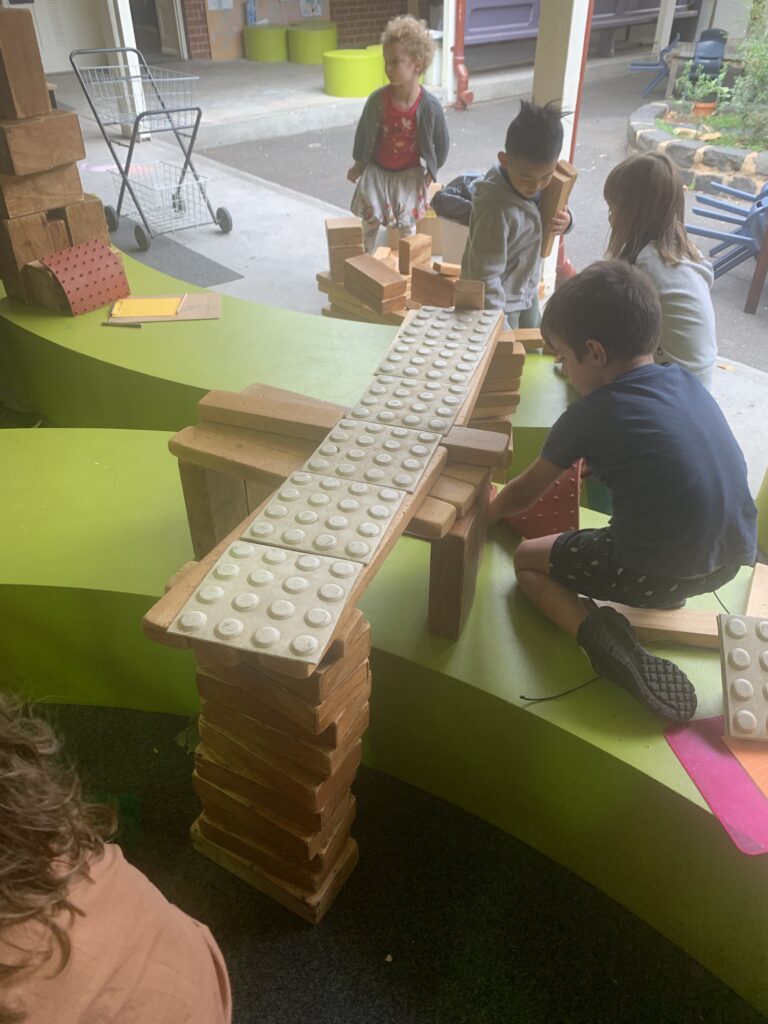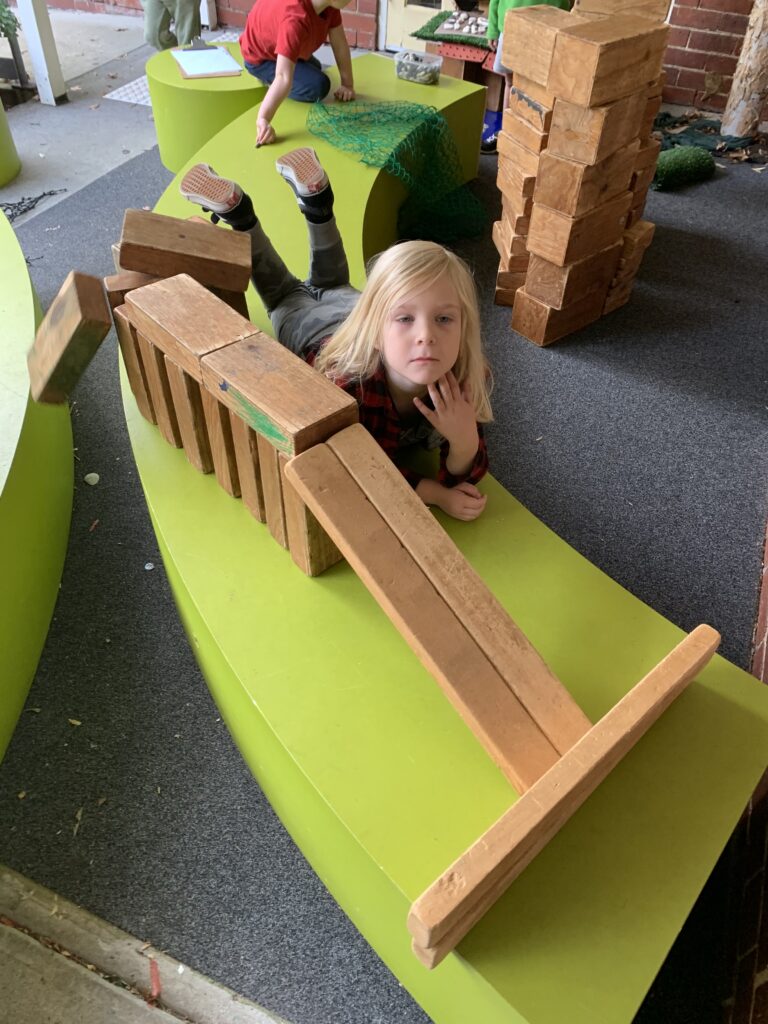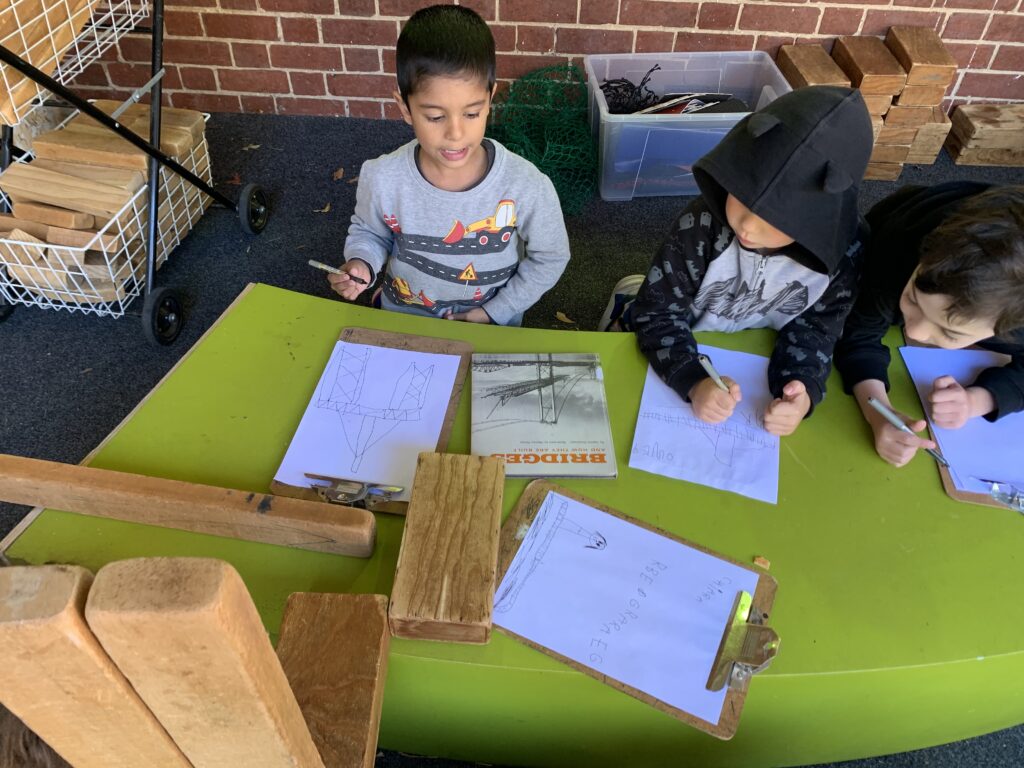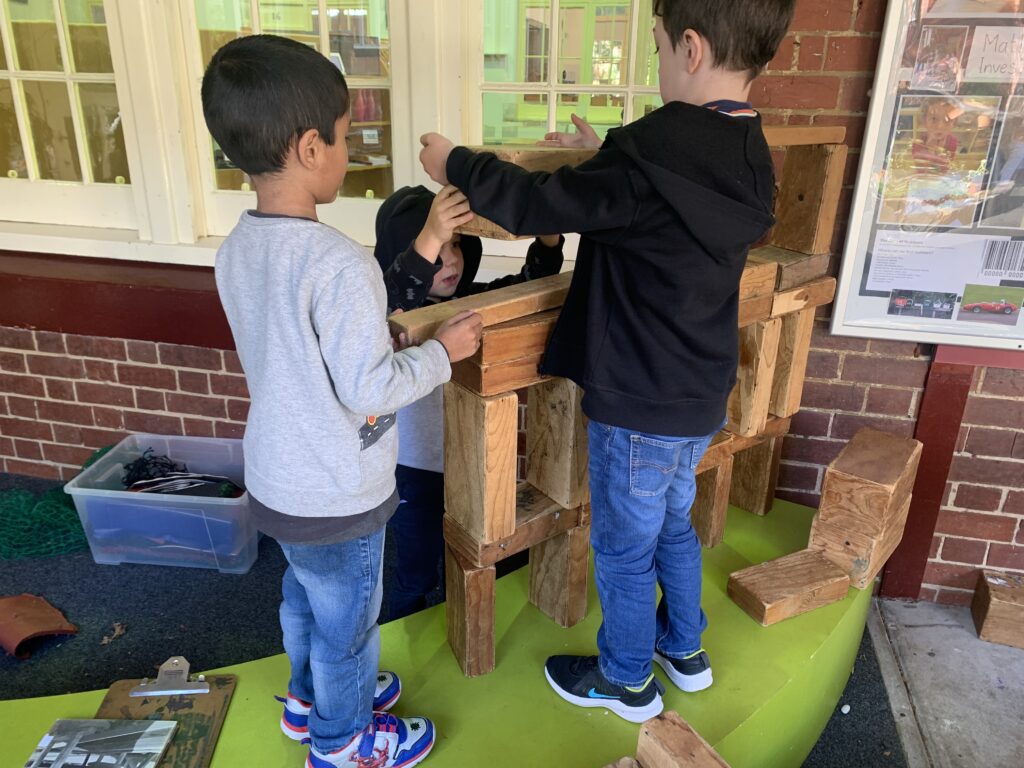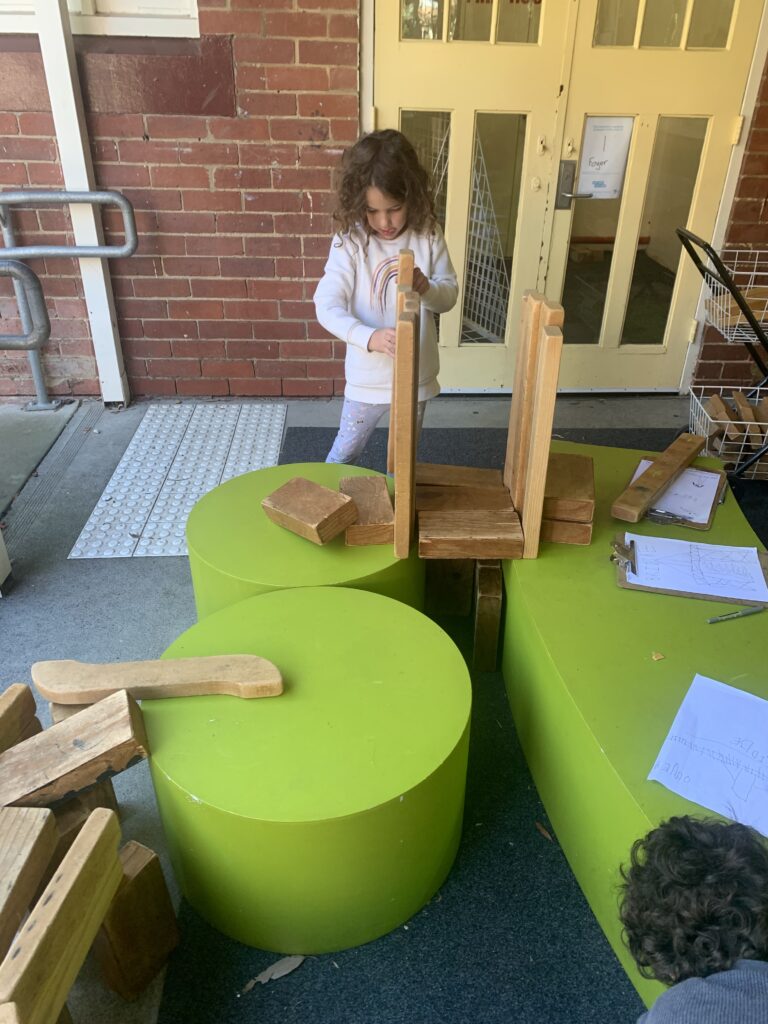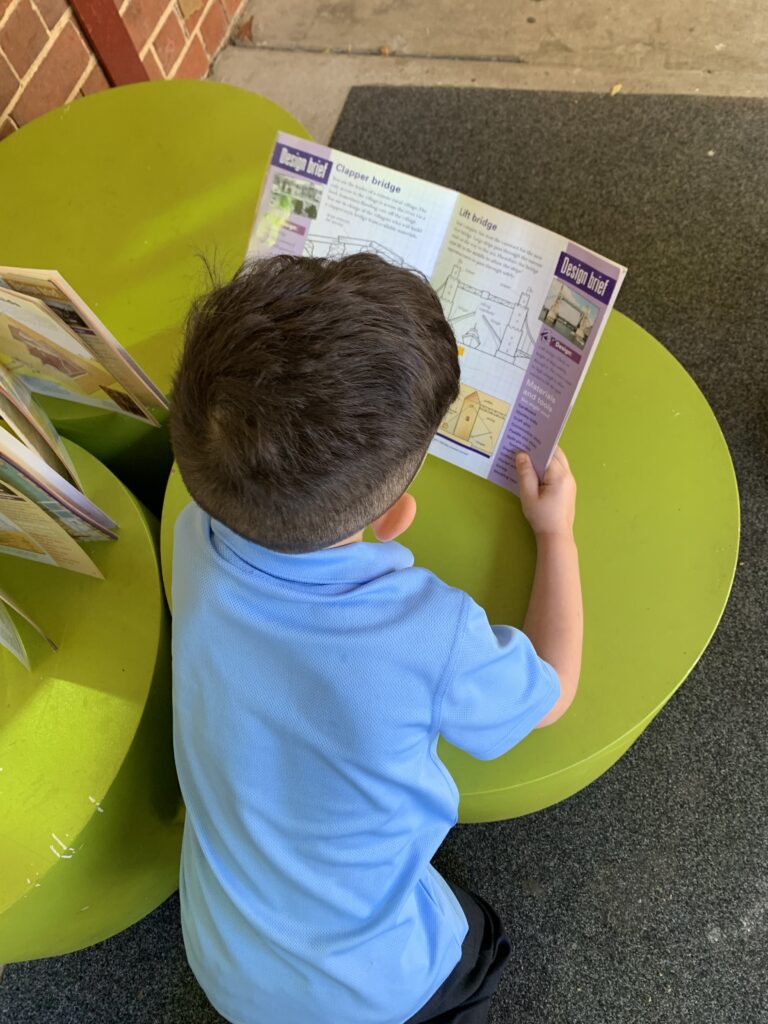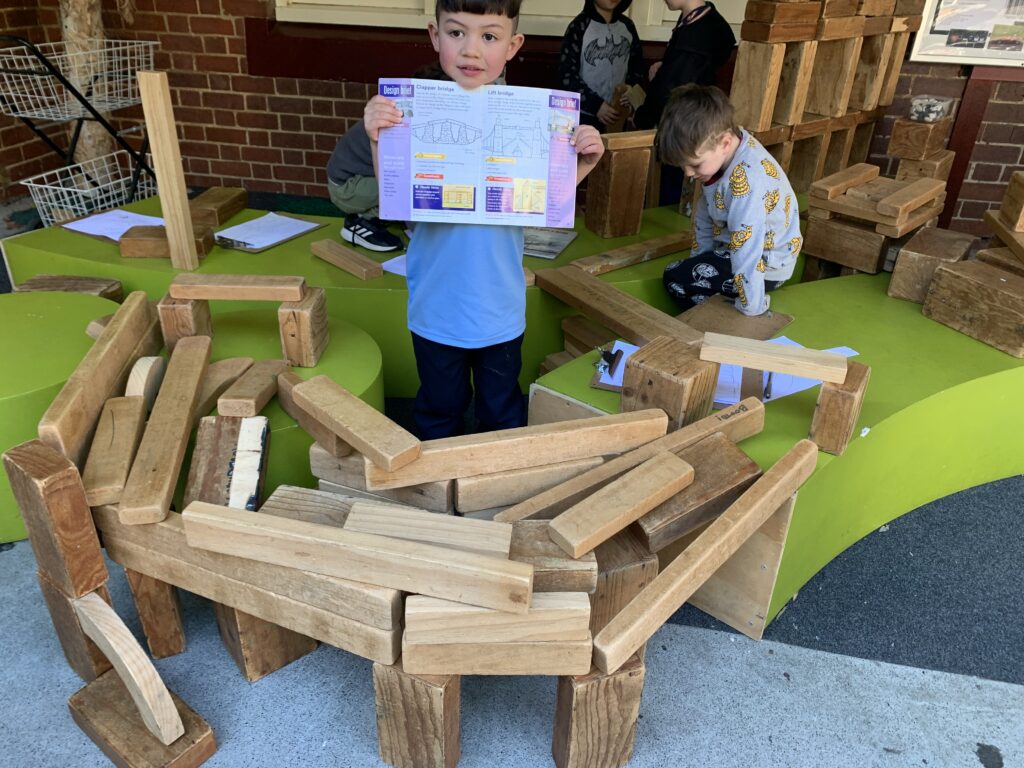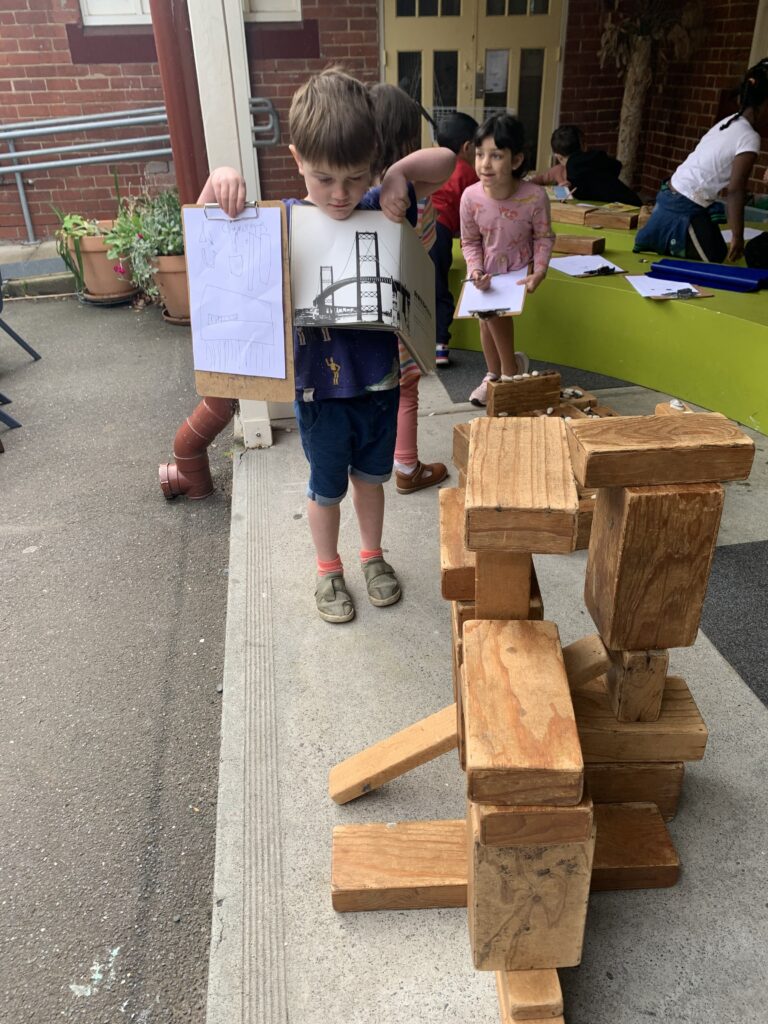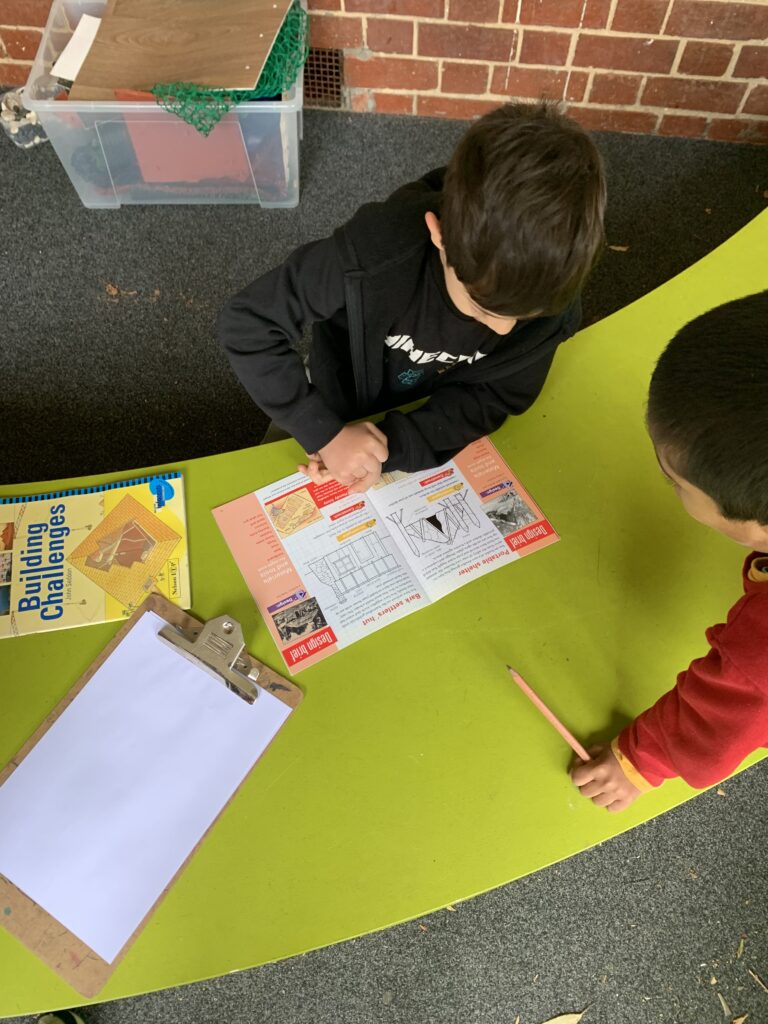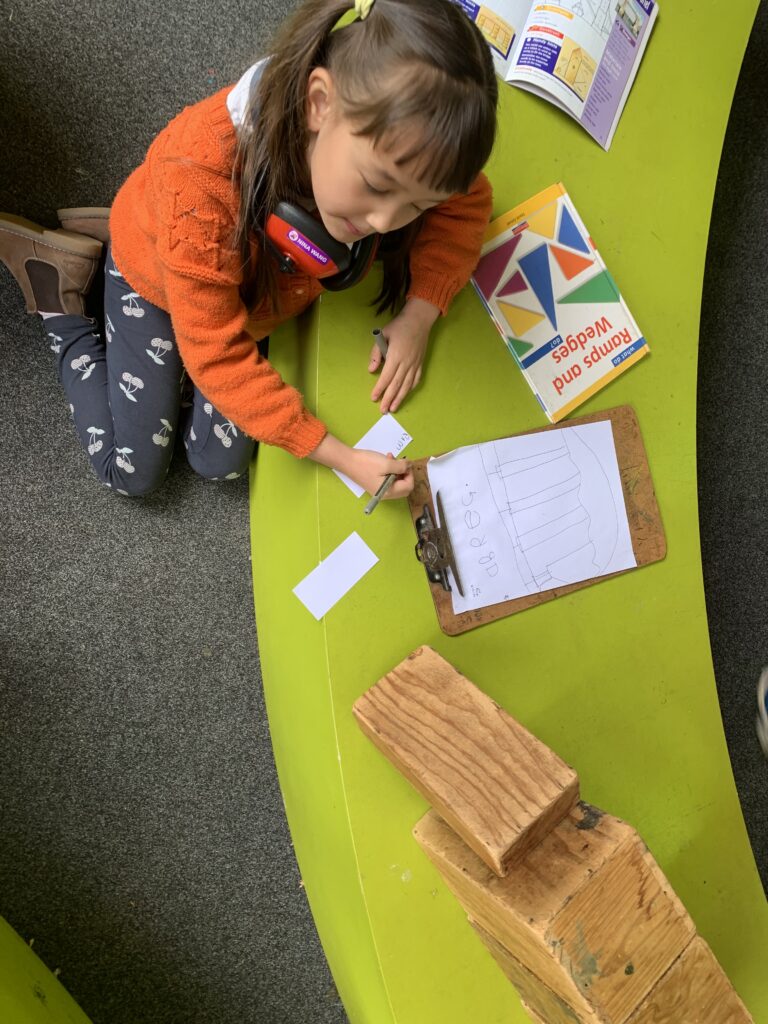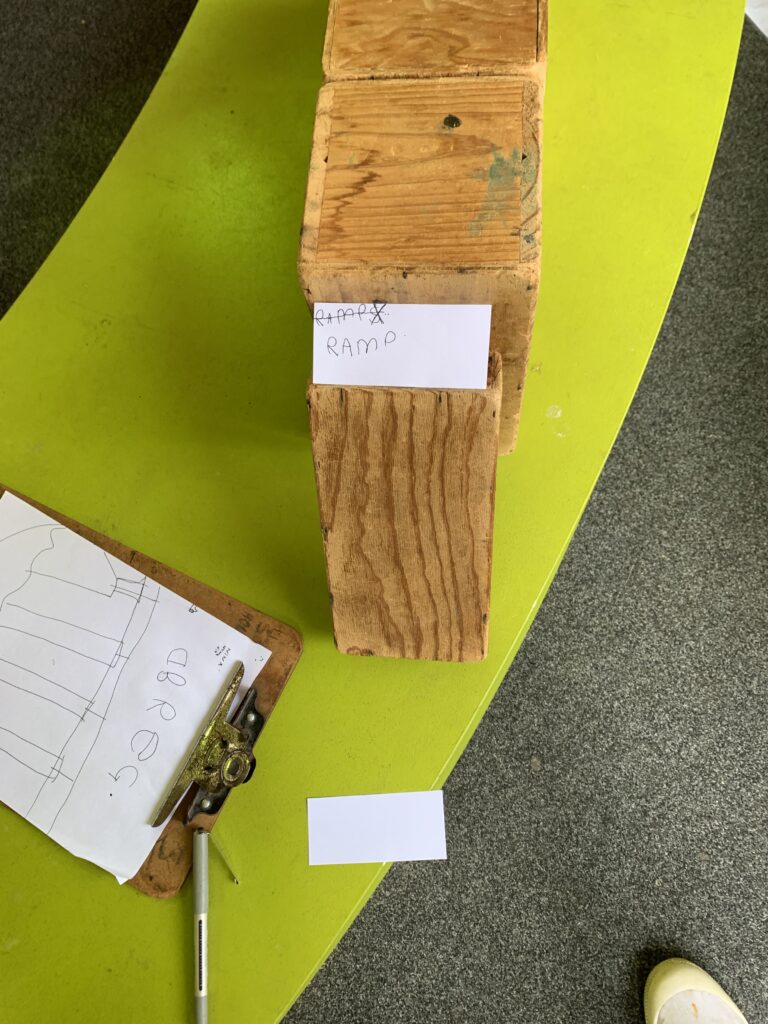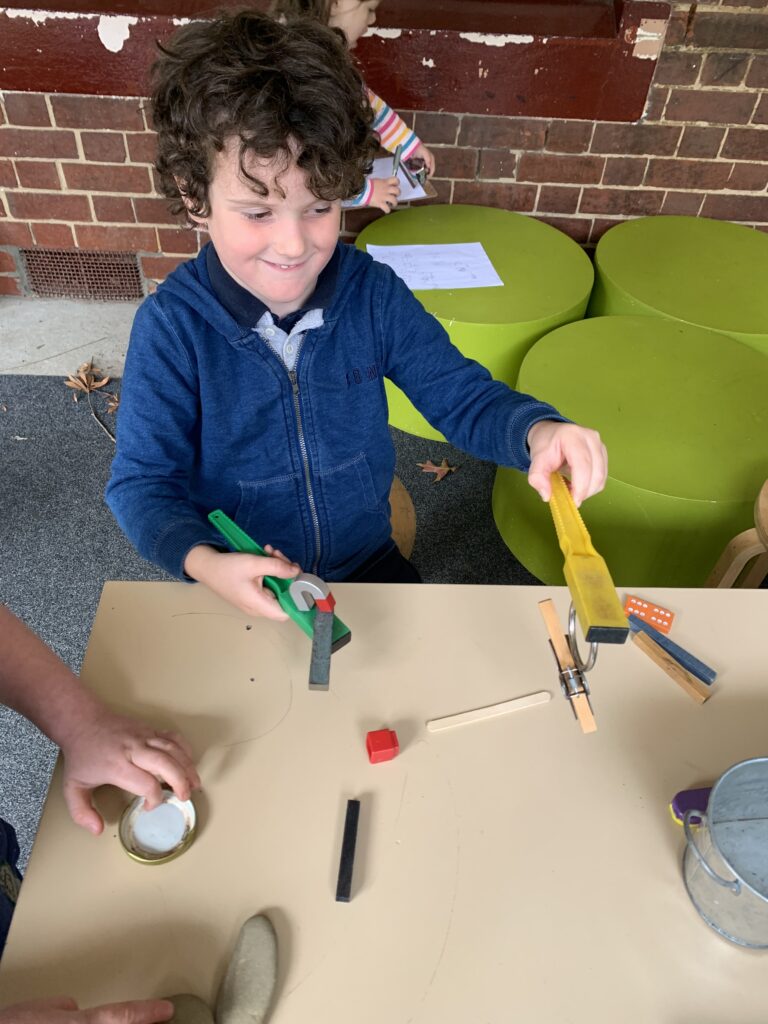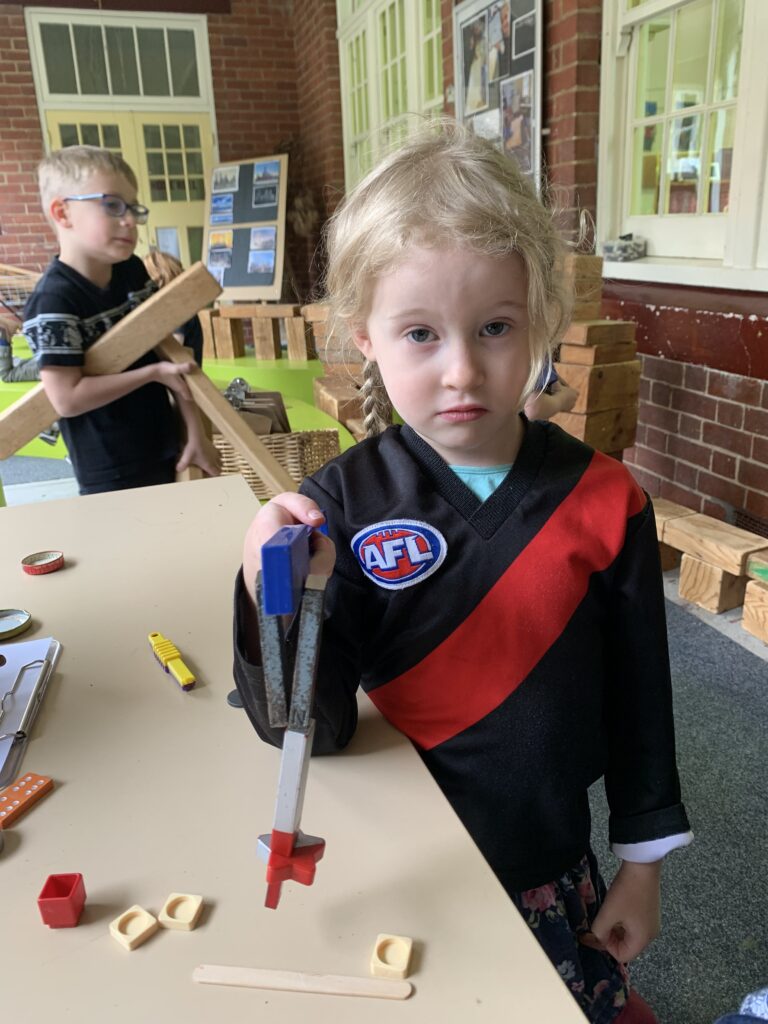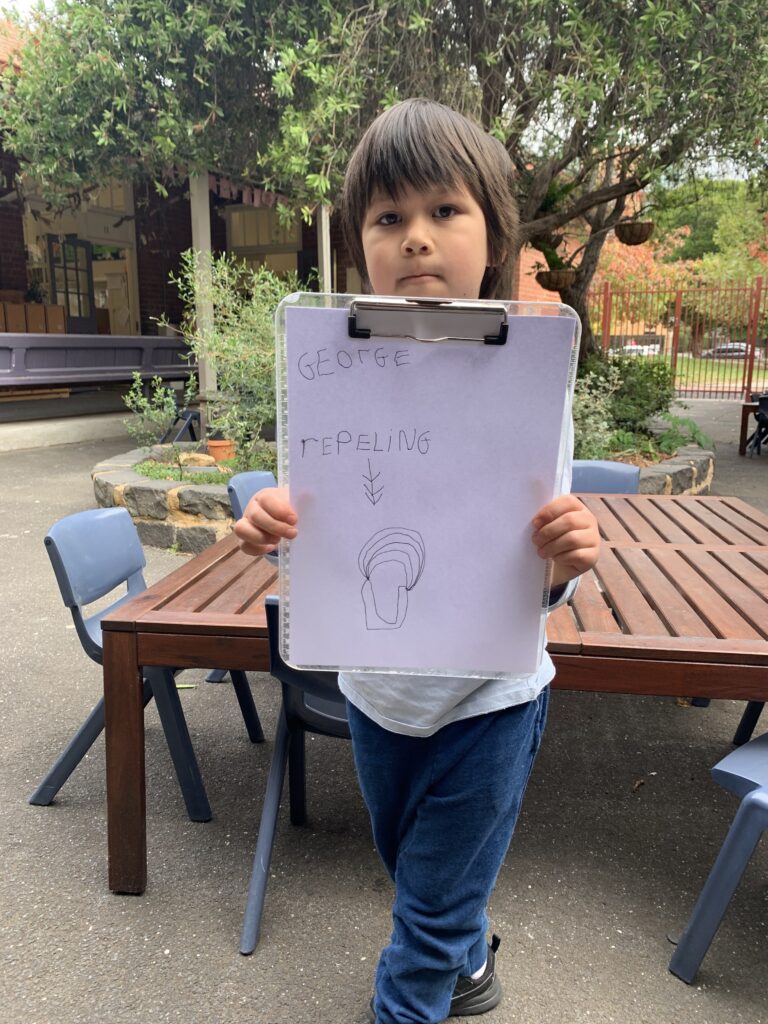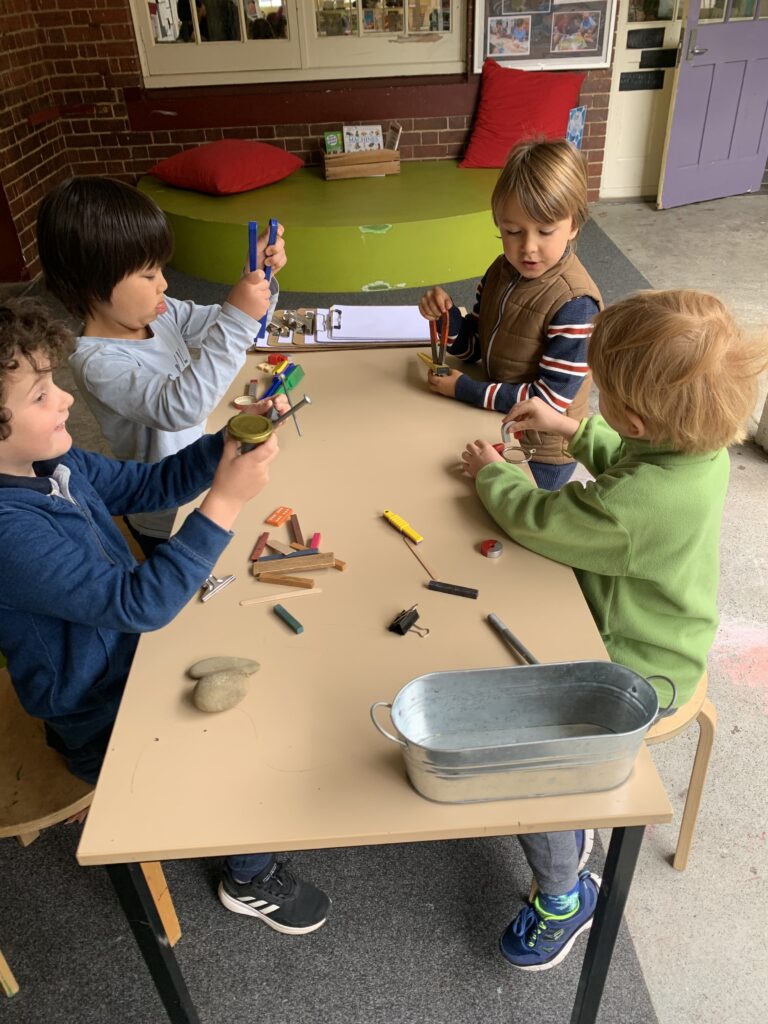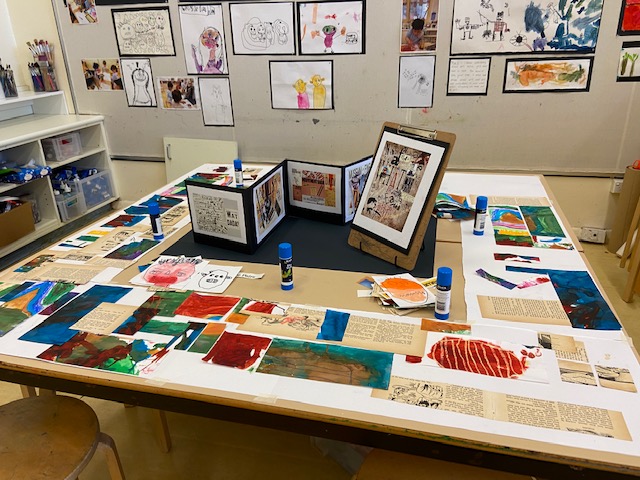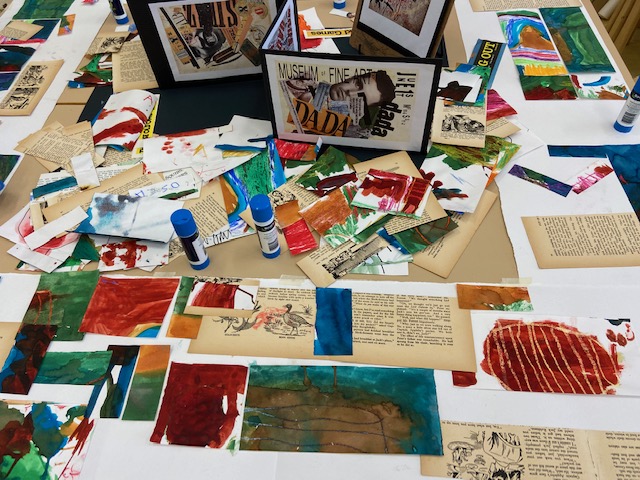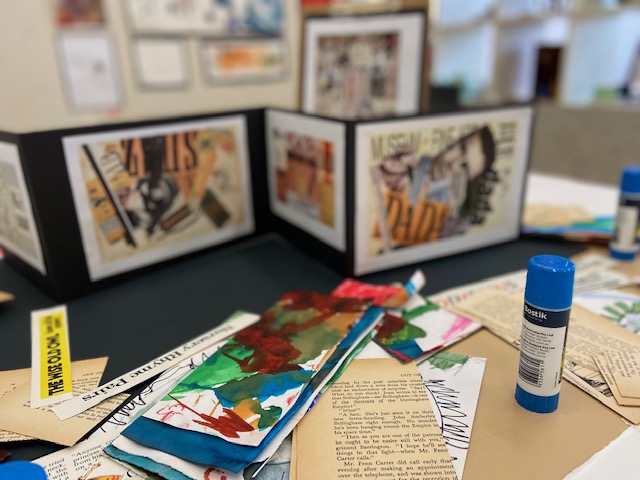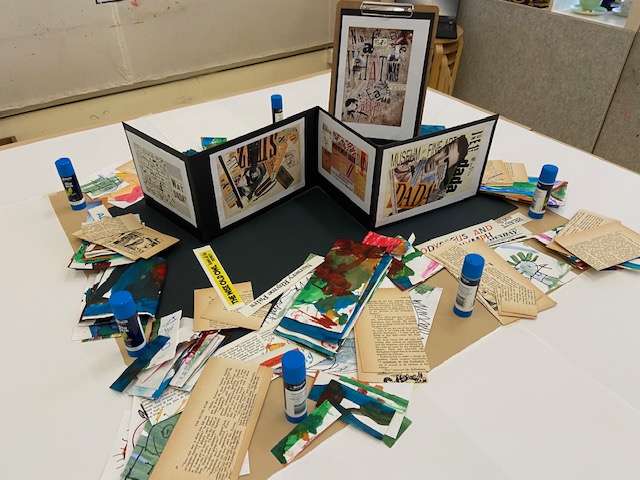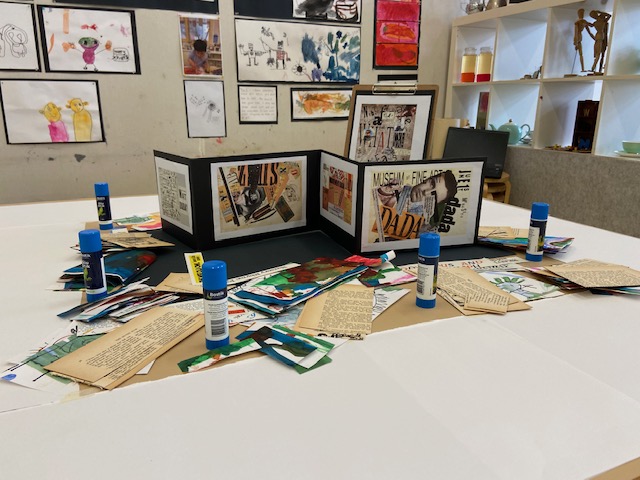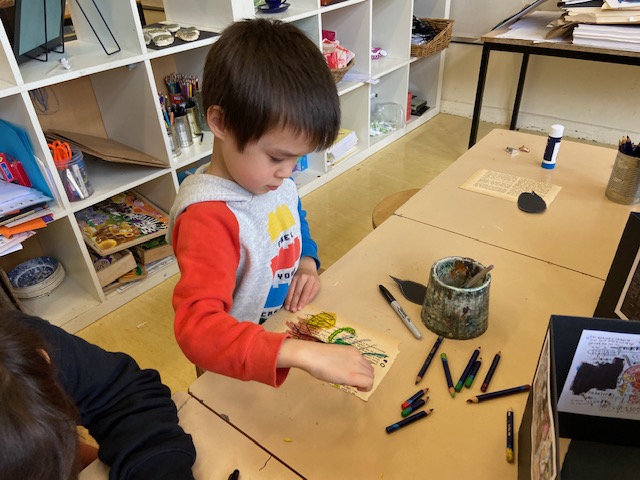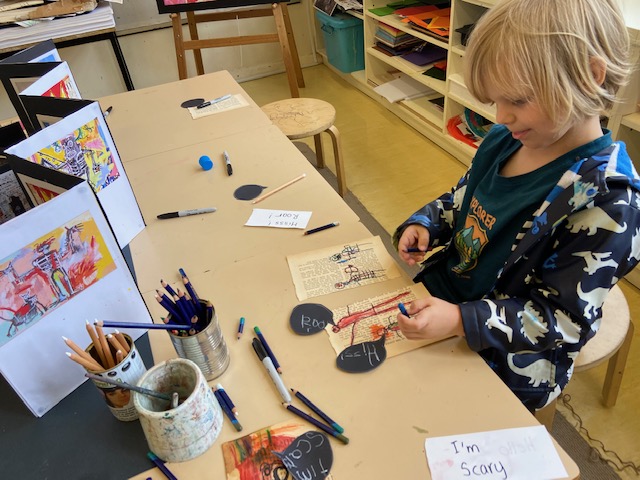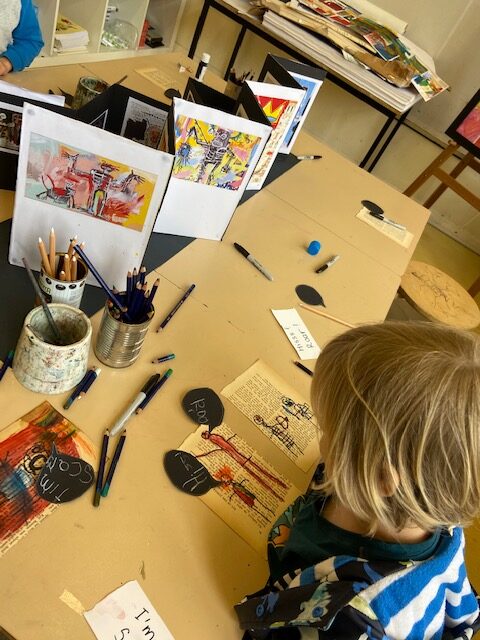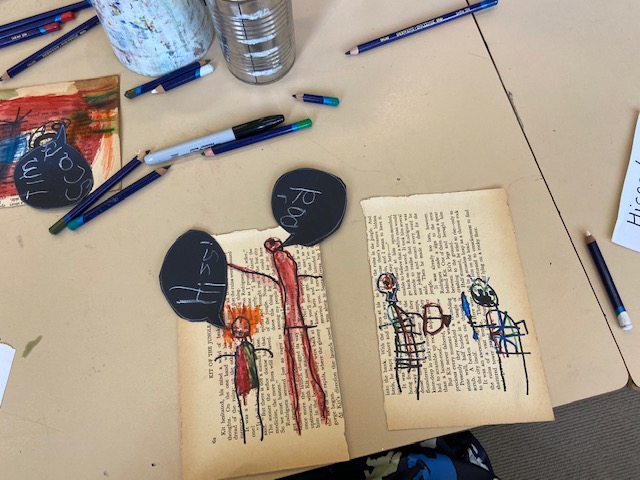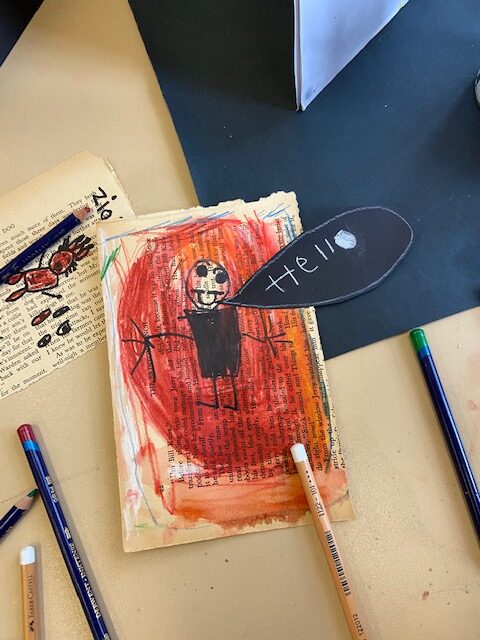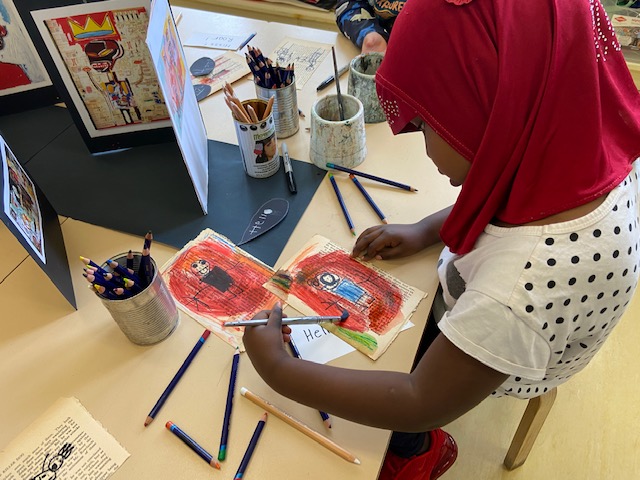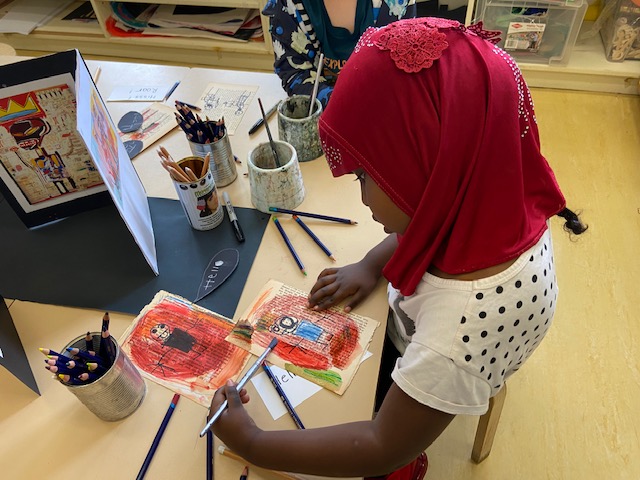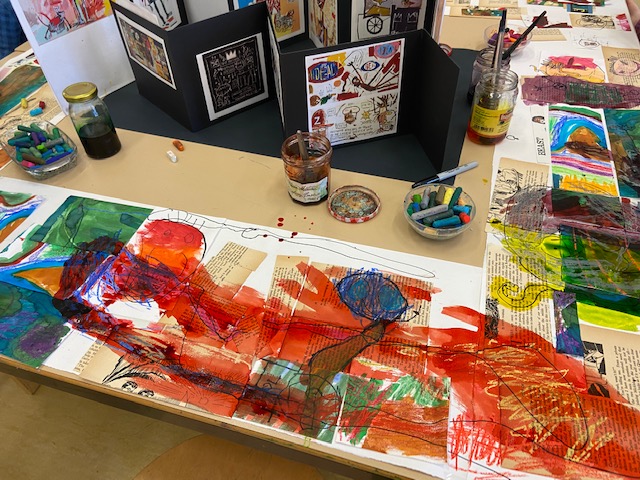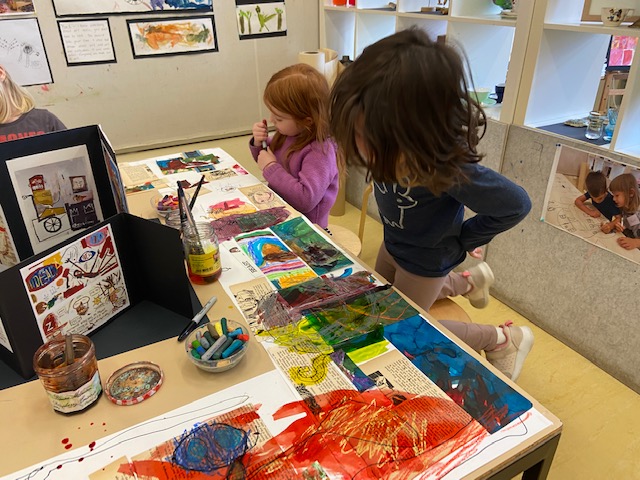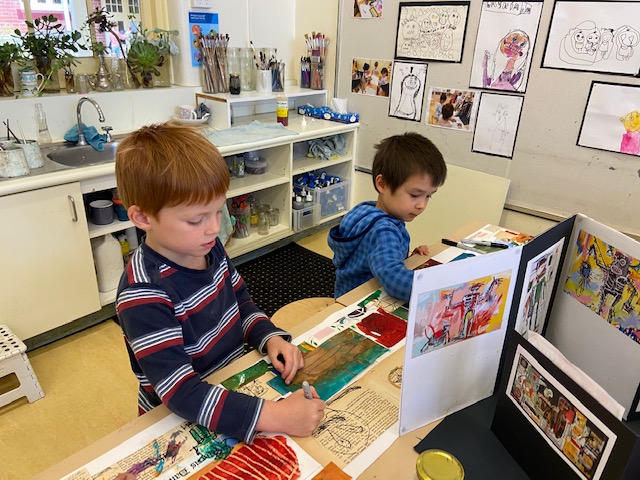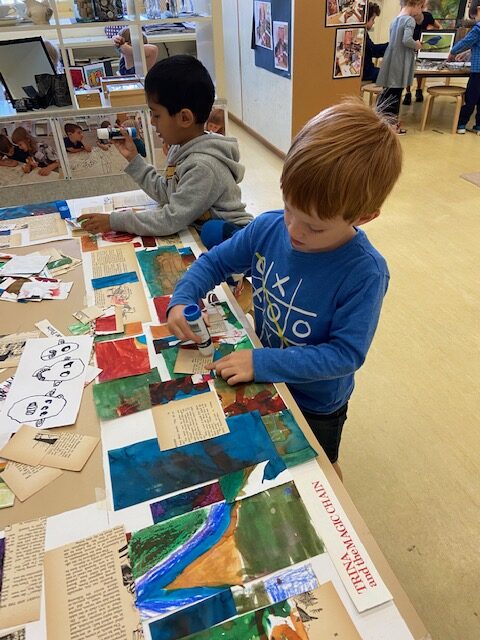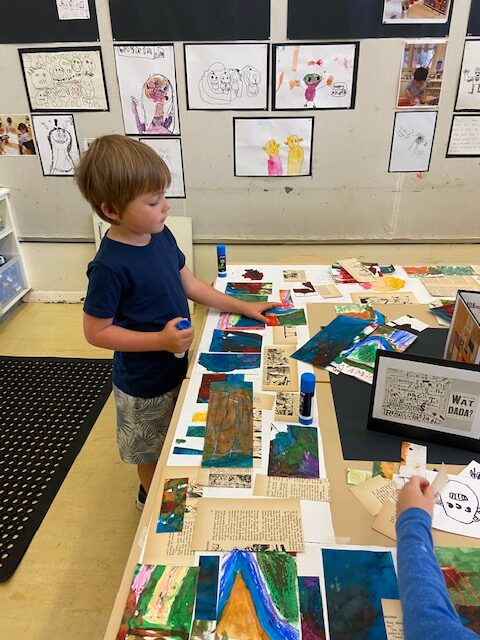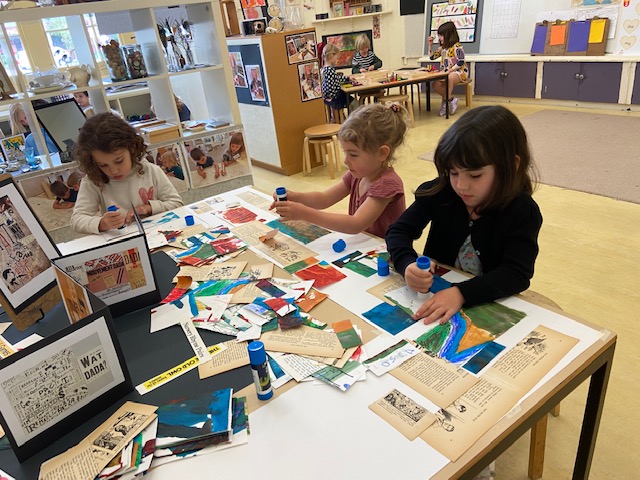Becoming documentors and observers of children’s instinctive processes of creating.
Term 2 has begun in earnest in the Prep Neighbourhood. We have been very keen to capitalise on the excitement generated by understanding what it means to become a writer and the important place writing has in our world. We set provocations to encourage children to recognise the multiple ways we communicate as communities, including building, designing; and creating art, stories and music. The children have begun to uncover the inherent processes involved in creating and communicating successfully. We are now beginning to further this line of thinking and inquiry with targeted provocations throughout the spaces in our Neighbourhood.
‘Create’, means to make something. Nina, Jazz, Amie, Gemma, Chiara, Zion, Isaac and Matilda
I am creative when I use my imagination. Emily
Anais- Creativity means I think that you have to work together.
Max K.– Creativity means building something.
Astrid- I think creativity means you work together and you make something?
Elena– I think creativity means doing art.
Badral– Creative means you can help your friends and you can make something with your friends.
Andy– I think creativity is when you help your friends do stuff.
Fabius– You need to build something to be creative.
Arlo– Creativity means that you can build something with your friends.
Nest Making and the Mathematics of Process
The stages are so when we know to do the parts of different bits of building the nest. Max K.
Last term several children brought in some found nests to share with the neighbourhood. This began an interesting inquiry into nest building, birds and the life-cycle of a bird within it’s nest. This term as the children began exploring how to create their own nests, a process for creating began to take on a mathematical and ordinal approach. This mathematical view has continued into their further inquiries into birds and their nests.
Construction and the Science of Engineering & Forces
Building bridges is popular and we are maintaining this focus and learning in the construction space into term 2. Each day, a new group of students is challenged to construct a bridge that extends the ideas inherent in the bridge designs from the previous day’s group. At the end of provocations time, children use sharing time to present their ideas. These ideas are relaunched again, as a challenge to the whole group, during an introduction to the next day’s provocations.
Throughout this learning, children have shared ideas and made further discoveries about different types of bridges and how their functions support their purpose. For example, a lift bridge opens up over a waterway to allow a boat to pass through. Additionally, children have shared scientific understandings about magnets and magnetic force and ramps. As educators, we have responded to this by adding resources that support children’s research and scientific exploration.
The Process of a Collaborative Art Piece
A new collaborative art experience is under way in the Studio this term. This collage is a further response and provocation from our children’s inquiries into writing in our world. This piece combines their old pieces of art with old magazine or book text combined with responses to the speech bubbles and comic book art inserest. It is our hope that this piece of art, emerging over weeks, will serve as a natural provocation into the possible processes that can enhance the creation of art.
Investigating the Processes of Written Communication
There has been no shortage of reasons to write in the Prep Neighbourhood. Between sharing notes or cards with friends, planning construction, recording ideas or questions; and dreaming up wild adventures everyone is writing!
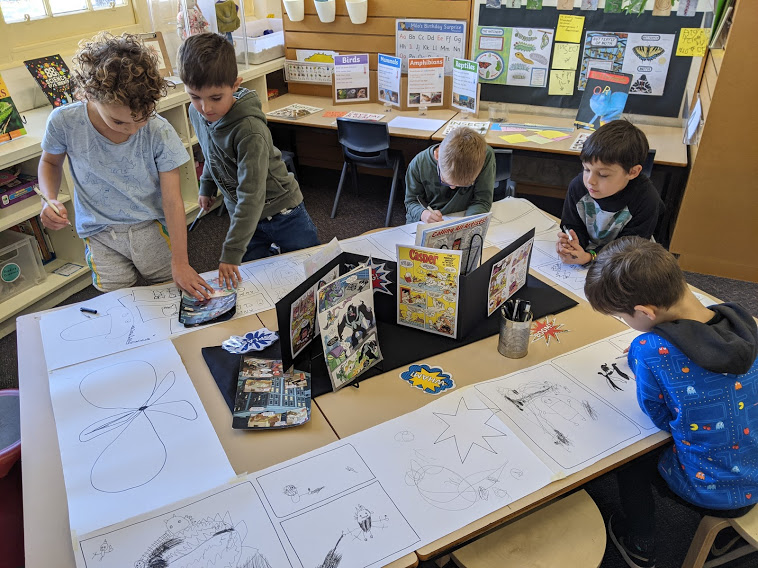
Collaborating and sharing ideas for stories and comics… 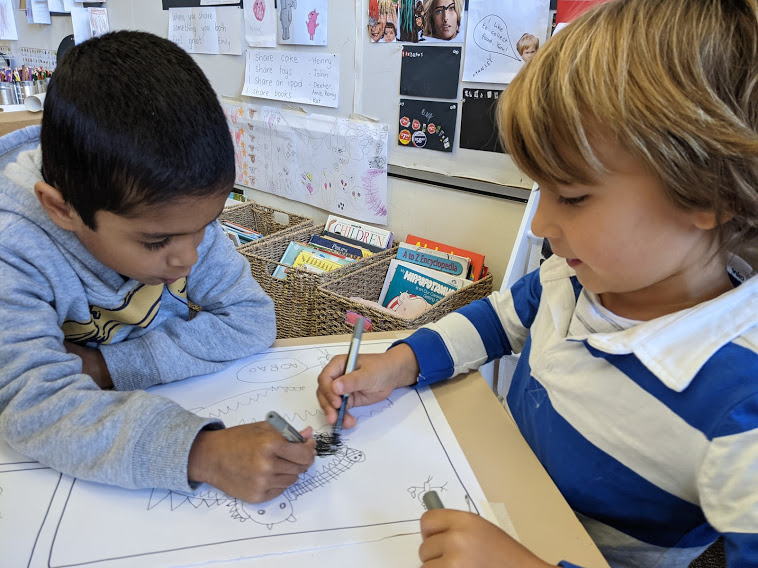
Children have been keen to explore stories where our characters can be revisited in a number of adventures. During Term 1, we revisited the antics of Piggy and Gerald by Mo Willams, and this term we have begun to analyse the characters of Charlie and Lola by Lauren Child. This has focused our attention on character development and character traits. This week, we began designing our own characters. Our characters mostly reflect ourselves as individuals, however, we are also beginning to see children play with negative character traits such as ‘Bad Bob’ or characters who are sneaky or grumpy.
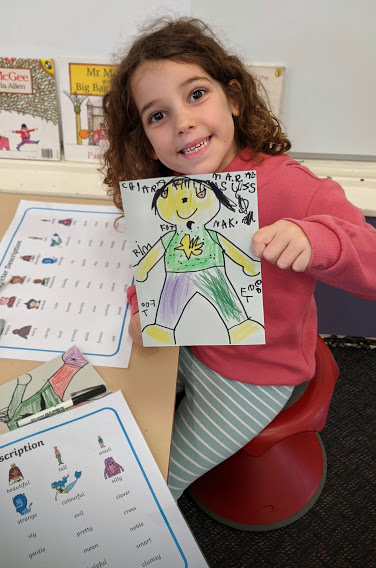
Chiara has labelled her character’s body parts and named her character so far… 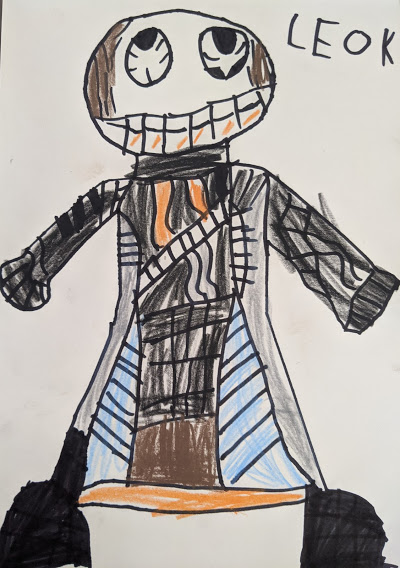
Leo is adapted some of his comic drawing skills in designing his character, who is a hunter…
Parallel to this, we are inquiring into non-fiction texts. We are building curiosity by asking questions and identifying simple facts we are curious to learn, which can be written as ‘Fun Facts’ we share. Drawing from inquiries in the Studio, children are keen to learn more about insects, birds and other creatures we find in and around our gardens.
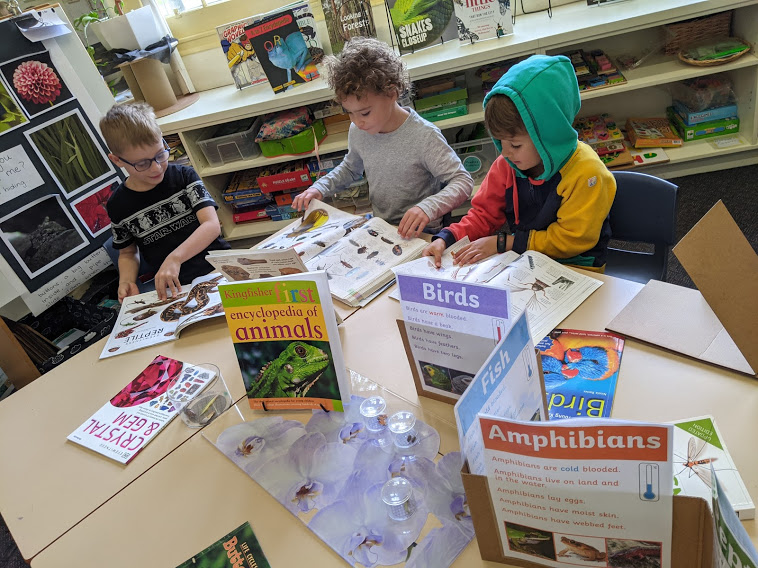
We love to learn about the world around us, reading non-fiction texts… 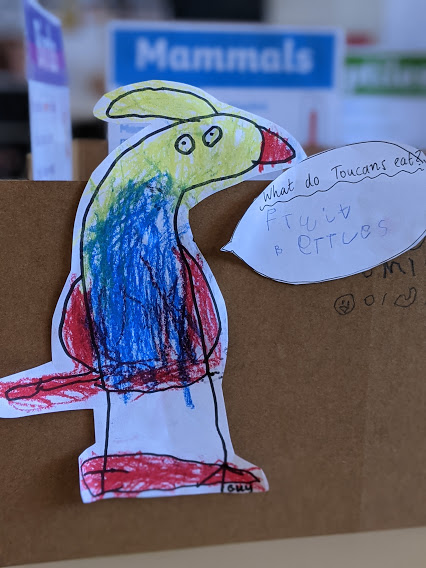
Guy’s curiosity was peaked by an image of a toucan…so he investigated further…
We are also folding back on some of our earlier inquiries about the purpose of writing and why people create books to see how our understanding or thinking may have changed since the beginning of school.
They make books with covers so they can’t break. Eren
How would people go to sleep or what would be the last thing to do if we didn’t have books? Oscar
We can read (books), we don’t have to make up our own stories. Gemma
These provocations will form the basis of some important upcoming projects involving creating books, our garden, creating garden art and building and engineering.
Some questions we, as educators, are considering whilst exploring and researching together with our children include-
What does it mean to create?
- Why do we create?
- What happens in our heads when we create something?
- How do we create something?
- When do we create in the Prep Neighbourhood?
- How do ‘artists’ create things?
- What steps/processes/stages do they take to create?
- When do our children ‘notice’ they are creating?
- How do our children identify/feel about being creative?
- How children diverge from ‘adult’ formal accepted processes and how might the adults’ perception of these processes restrict their natural creativity and process?
- At what point do we as educators step in?
- Can and how do processes hamper creativity?
We now invite your thoughts, wonderings and questions in response to these ideas. Perhaps Badral’s comment may spark some thinking for us all.
You can learn how to write and draw, it will help you to be creative. Badral


